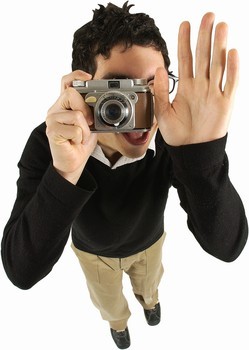What Is the Standard Pose for a Headshot?
When it comes to headshots, the pose is just as important as the lighting, composition, and expression. A good pose can help convey confidence, approachability, and professionalism—all of which are essential for making a great first impression on casting directors, agents, or hiring professionals. But what exactly is the standard pose for a headshot, and how can you perfect it?
Here’s a guide to understanding the standard headshot pose and how to make the most of it during your next photo session.
What Is the Standard Pose for a Headshot?
The standard pose for a headshot is straightforward and natural, designed to focus attention on your face and expression. While there is some flexibility depending on your profession or the roles you’re targeting, these are the key elements of the classic pose:
- Centered Position:
Your body should face slightly to the side, while your head turns toward the camera. This subtle angle adds dimension to the photo, preventing it from looking too flat. - Relaxed Shoulders:
Keep your shoulders relaxed and slightly down to avoid tension. This creates a more approachable and natural look. - Neutral Head Tilt:
Your head should remain upright and level with the camera. Avoid tilting your head too much, as this can appear unnatural or unbalanced. - Direct Eye Contact:
Look directly into the camera lens. Strong eye contact conveys confidence, which is especially important for acting and corporate headshots. - Gentle Smile or Neutral Expression:
The choice between a smile or a neutral expression depends on the purpose of your headshot. A warm smile works well for commercial roles or professional business headshots, while a neutral expression may suit dramatic roles or more formal industries.
Tips for Nailing the Pose
- Practice in the Mirror:
Spend some time practicing your pose and expressions in front of a mirror before your photo session. This will help you understand what angles and looks work best for you. - Keep Your Chin Slightly Forward:
Pushing your chin slightly forward and down can help define your jawline and prevent a double-chin effect. Photographers often call this “turtling,” and it’s a small adjustment that makes a big difference. - Be Mindful of Posture:
Sit or stand tall with a straight back. Good posture not only looks professional but also prevents you from appearing slouched or tense in the photo. - Relax Your Hands:
While your headshot focuses on your face, your hands may still be visible in three-quarter shots. Keep them relaxed and natural if they’re in the frame. - Take Direction:
Trust your photographer’s guidance. Experienced photographers know how to position you to bring out your best features and create a flattering image.
What to Avoid in Your Pose
- Overly Stiff Poses: Avoid rigid or overly formal positions that can make you appear uncomfortable or unapproachable.
- Exaggerated Tilts: Tilting your head too far to one side can feel unnatural and detract from the focus on your face.
- Distracting Angles: Poses that obscure your facial features, like looking down or away from the camera, are not ideal for headshots.
Variations for Different Industries
While the standard pose is a great starting point, you may need slight adjustments based on your profession or the type of headshot you’re taking:
- Actors: For acting headshots, focus on showing personality and versatility. Subtle variations in expression and pose can help convey your range.
- Corporate Professionals: Business headshots typically require a polished and approachable look, with a direct gaze and a light smile.
- Models: Modeling headshots (or “comp cards”) may include more stylized poses, with a focus on showcasing your unique features.
Why the Pose Matters
The pose in a headshot is about more than just looking good—it’s about making a connection. Casting directors and professionals often make decisions based on the impression they get from your photo. A confident and approachable pose helps convey the qualities they’re looking for in a candidate.
Final Thoughts
The standard pose for a headshot is simple, natural, and designed to highlight your personality and professionalism. By focusing on proper posture, direct eye contact, and a relaxed demeanor, you can create a headshot that stands out for all the right reasons.
Work with a professional photographer who can guide you through the process, and don’t be afraid to experiment with subtle variations to find the pose that best represents you. Remember, your headshot is often your first introduction—make it count!




